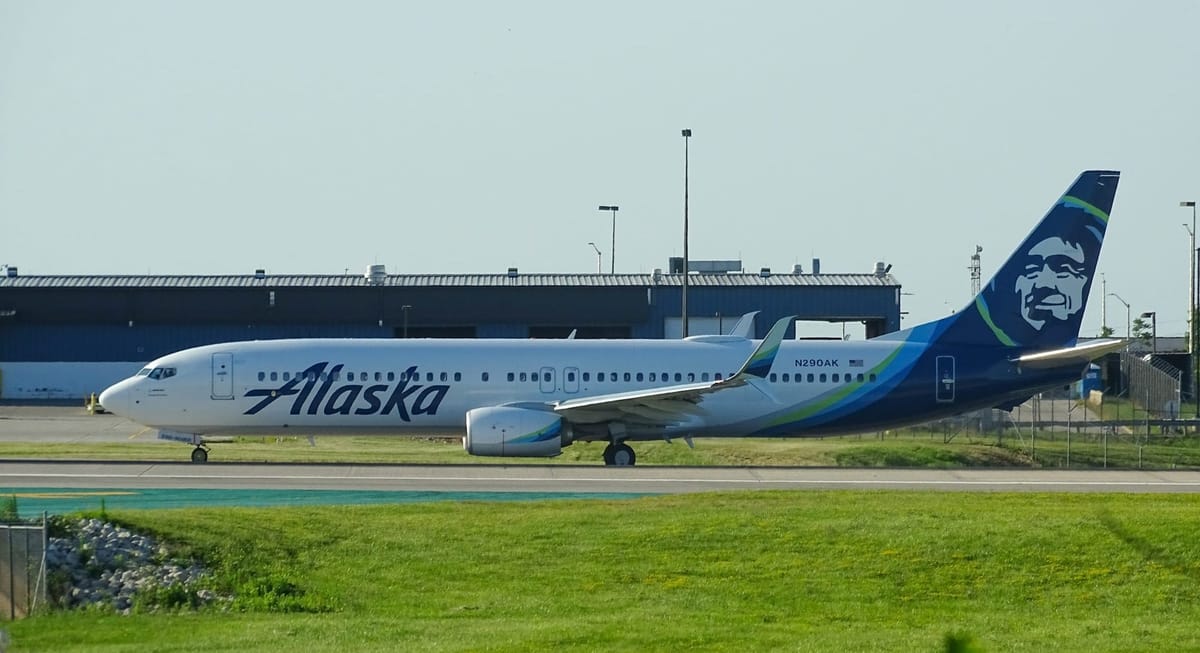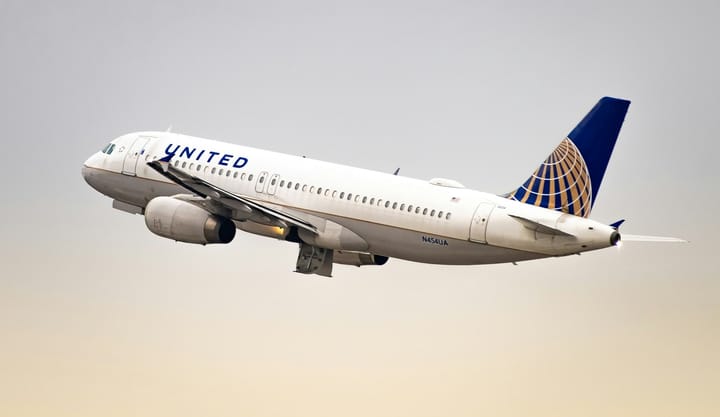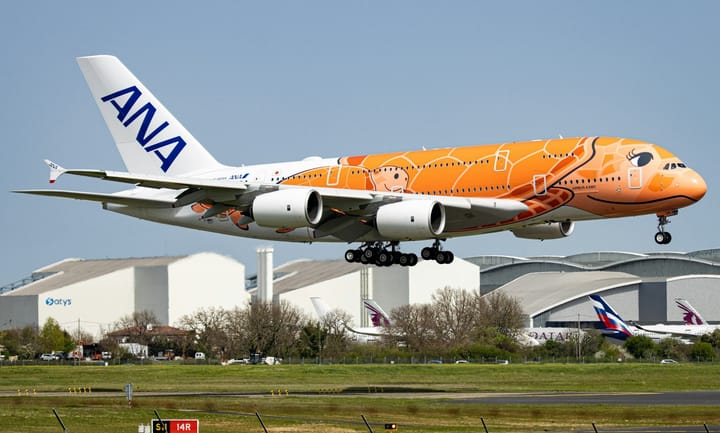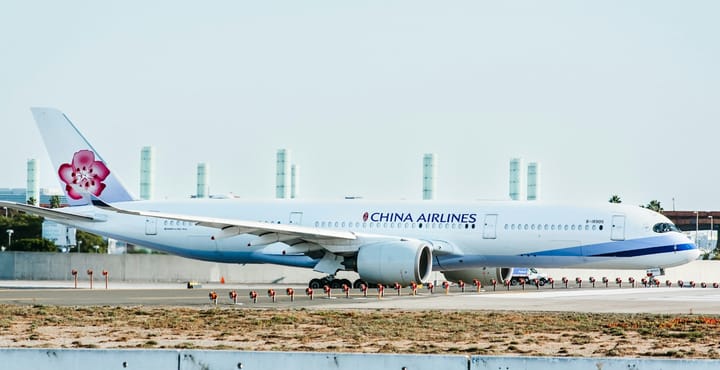A comprehensive overview of Alaska Airlines' operational and financial performance, including total passengers transported, flights operated, available seat miles (ASM), revenue passenger miles (RPM), passenger load factor, and a detailed financial analysis of operating revenue and net income
1. Total Passengers Carried
Alaska Airlines has consistently demonstrated a commitment to customer satisfaction, which is reflected in its passenger transport figures. In 2024, the airline was named America's favorite airline for the second consecutive year, achieving a score of 82 on the American Customer Satisfaction Index (ACSI). This recognition came despite a safety incident earlier in the year, underscoring the airline's resilience and dedication to passenger service.
The airline's focus on enhancing the travel experience, including investments in app services and ease of reservations, has likely contributed to maintaining and growing its passenger base. Additionally, the airline's strategic expansion through the acquisition of Hawaiian Airlines in 2024 has broadened its network, potentially increasing its appeal to a wider range of passengers.
Alaska Airlines' commitment to sustainability and community engagement also plays a role in attracting passengers. In 2024, the airline invested in over 7 million gallons of Sustainable Aviation Fuel (SAF) and donated more than 45 million miles to nonprofits and charities. These initiatives resonate with environmentally conscious travelers and those who value corporate social responsibility.
Furthermore, Alaska Airlines' frequent flyer program, Mileage Plan, has been recognized as the best U.S. airline frequent flyer program by WalletHub in 2024. Such accolades reinforce customer loyalty and encourage repeat travel, contributing to the airline's passenger transport figures.
2. Total Flights Operated
Operational efficiency and strategic planning have been central to Alaska Airlines' ability to maintain and increase its flight operations. The airline's hubs in Anchorage, Los Angeles, Portland, San Diego, San Francisco, and Seattle/Tacoma facilitate a robust network that supports a high volume of flights.
In 2024, Alaska Airlines experienced a significant 12% surge in its stock, the largest one-day increase in over four years, following an upward revision of its fourth-quarter earnings guidance. This financial performance indicates strong demand and efficient management of flight operations.
The airline's commitment to safety and maintenance excellence is further evidenced by its 16th FAA Diamond Award for excellence in maintenance training. Such recognition underscores the airline's dedication to operational excellence and reliability.
Alaska Airlines' strategic expansion through the acquisition of Hawaiian Airlines has also contributed to an increase in flight operations. The combined network offers over 1,400 daily flights to more than 140 cities, providing passengers with greater connectivity and flexibility.
3. Available Seat Miles (ASM)
Alaska Airlines' ASM figures reflect its strategic growth and capacity planning. The airline's investment in Sustainable Aviation Fuel (SAF) and partnerships to optimize flight paths demonstrate a commitment to increasing capacity while minimizing environmental impact.
The merger with Hawaiian Airlines has expanded Alaska's fleet and international reach, likely contributing to an increase in ASM. The combined network offers access to 1,200 destinations worldwide through global partners and the oneworld Alliance, enhancing the airline's capacity and reach.
Furthermore, the airline's focus on enhancing premium services and expanding its loyalty program indicates an effort to attract a broader customer base, thereby justifying increases in available seating capacity. In 2024, Alaska Airlines announced plans to increase its premium seat mix on Boeing narrowbody aircraft to 29%, adding 1.3 million premium seats annually to its mainline fleet.
Alaska Airlines' commitment to sustainability and innovation also plays a role in its ASM growth. The airline has set a long-term goal to achieve net zero carbon emissions by 2040 and has invested in initiatives such as the Flyways AI Platform to optimize flight paths and reduce environmental impact.
4. Revenue Passenger Miles (RPM)
Revenue Passenger Miles (RPM) serve as a critical metric in assessing an airline's operational performance, representing the total number of miles traveled by paying passengers. In 2024, Alaska Airlines experienced a significant increase in RPM, reflecting the airline's strategic initiatives and market demand.
A pivotal factor contributing to this growth was the acquisition of Hawaiian Airlines, finalized in September 2024. This strategic move expanded Alaska Airlines' network, adding 71 aircraft to its fleet and increasing its reach to over 1,400 daily flights across more than 140 cities. The integration of Hawaiian Airlines not only broadened the route network but also enhanced the airline's capacity to serve a diverse customer base, thereby boosting RPM.
Moreover, Alaska Airlines' focus on customer satisfaction played a significant role in increasing RPM. The airline was named America's favorite airline for the second consecutive year in 2024, achieving a score of 82 on the American Customer Satisfaction Index (ACSI). This recognition underscores the airline's commitment to providing a superior travel experience, which in turn encourages repeat business and attracts new customers.
Operational efficiency also contributed to the rise in RPM. In 2024, Alaska Airlines reported a net income of $538 million, or $3.08 per share, under Generally Accepted Accounting Principles (GAAP). Excluding special items and other adjustments, the net income was $625 million, or $4.87 per share. These financial results reflect the airline's effective management and operational strategies, which have enabled it to capitalize on market opportunities and increase passenger miles.
5. Passenger Load Factor (%) Analysis
Passenger Load Factor (PLF) is a key performance indicator in the airline industry, measuring the percentage of available seating capacity that is filled with paying passengers. A higher PLF indicates better utilization of an airline's capacity and is often associated with increased profitability. In 2024, Alaska Airlines achieved an average load factor of 83.9%, slightly higher than the 83.7% reported in 2023.
This improvement in PLF reflects the airline's effective capacity management and its ability to align supply with market demand. The integration of Hawaiian Airlines expanded the combined fleet to 392 aircraft, enhancing the airline's ability to serve a broader network and optimize seat occupancy. The expanded network and increased flight frequencies likely contributed to higher load factors by offering passengers more travel options and convenient schedules.
Additionally, Alaska Airlines' focus on operational reliability played a role in maintaining high load factors. The airline reported a higher-than-expected completion rate and load factor during the holiday travel period in the fourth quarter of 2024, indicating strong demand and efficient operations. This performance suggests that the airline successfully managed its resources to meet peak travel demand, thereby maximizing seat occupancy.
6. Financial Performance Analysis
6.1. Operating Revenue ($) Performance
Alaska Airlines' financial performance in 2024 underscores the resilience and adaptability of its business model in a dynamic aviation landscape. The airline achieved record full-year revenue of $10.85 billion, marking a significant milestone in its financial history. This achievement was driven by a diversified revenue base, with 48% generated through premium products, loyalty programs, ancillaries, and cargo services. Such diversification has been pivotal in mitigating risks associated with market volatility and enhancing revenue stability.
The airline's diversified revenue streams played a significant role in this achievement. Passenger revenue increased by 37% to $3.18 billion, while loyalty program and cargo revenue saw substantial gains. The integration of Hawaiian Airlines contributed to this growth by expanding the network and offering more destinations, thereby attracting a broader customer base.
Alaska Airlines' commitment to enhancing premium services and expanding its loyalty program further supported revenue growth. The airline announced plans to increase its premium seat mix on Boeing narrowbody aircraft to 29%, adding 1.3 million premium seats annually to its mainline fleet. Such initiatives are aimed at attracting high-yield customers and increasing ancillary revenue.
6.2. Net Income ($) Analysis
Alaska Airlines' net income in 2024 reflects a significant improvement in profitability, highlighting the effectiveness of its strategic initiatives and operational efficiency. The airline reported a GAAP net income of $538 million, or $3.08 per share, compared to $252 million, or $1.83 per share, in 2023. Excluding special items and other adjustments, the net income was $625 million, or $4.87 per share, surpassing the better end of the prior guidance range.
This growth in net income can be attributed to several factors. The acquisition of Hawaiian Airlines expanded the airline's network and fleet, contributing to increased revenue and market share. Operational efficiency, cost management, and revenue diversification also played crucial roles in enhancing profitability. The airline's adjusted pretax margin of 7.1% for the full year 2024 was among the highest in the industry, indicating strong financial health.
Additionally, Alaska Airlines' focus on shareholder value is evident through its share repurchase program. In 2024, the company repurchased 5.5 million shares for $312 million, reflecting confidence in its financial position and future prospects.




Comments ()